In digital marketing, comprehending the entire customer journey is imperative for making well-informed strategic decisions and allocating resources effectively.
However, as any seasoned SEO practitioner can attest, assessing the impact of individual digital tactics, let alone navigating a labyrinth of nonlinear user touchpoints, can pose significant challenges.
So, where does one start?
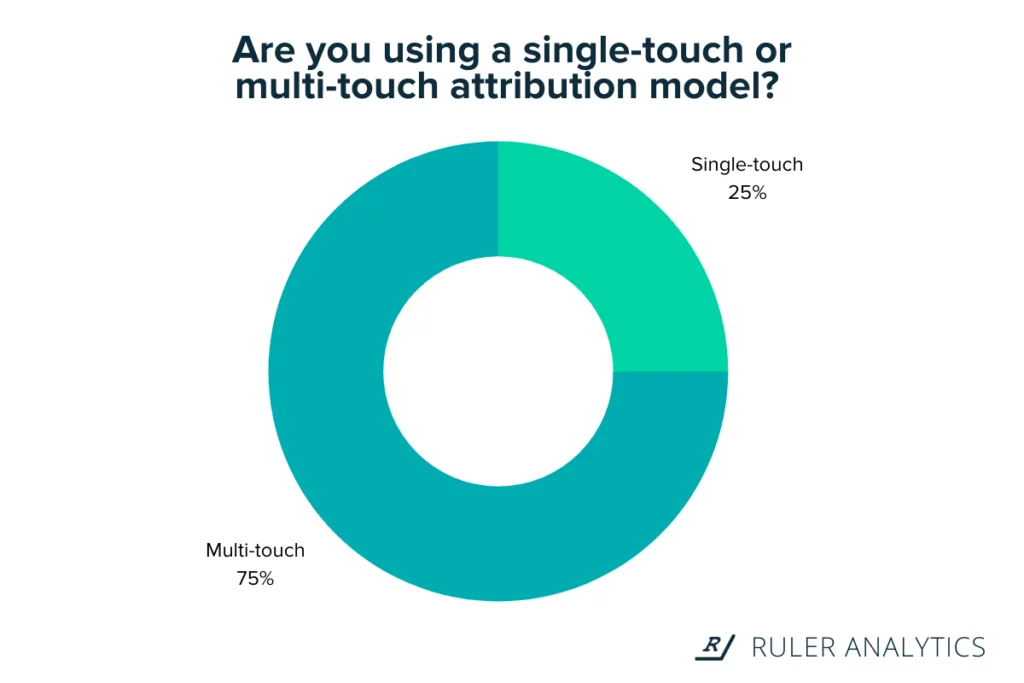
Historically, marketers have relied on first-touch and last-touch attribution models to fine-tune their campaigns for optimal impact. While each approach offers distinct advantages, combining them yields a synergistic effect that transcends their individual merits: multi-touch attribution.
First-Touch Attribution: Capturing Initial Engagement
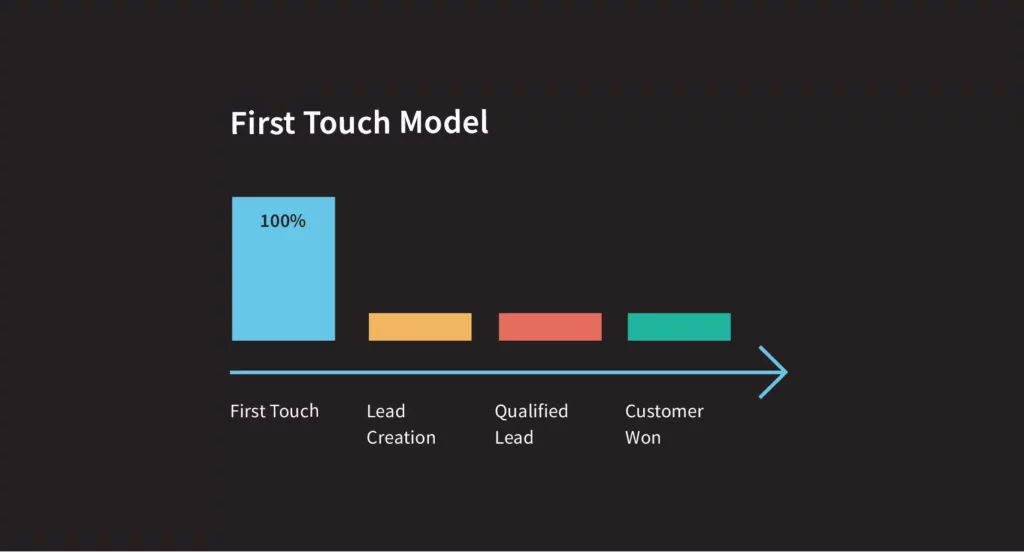
First-touch attribution places significance on the inaugural interaction a user has with your brand. This initial touchpoint can manifest across diverse channels, including social media, organic search, or referral links. Despite being distant from the final conversion, integrating first-touch attribution into your digital marketing strategy offers several key advantages:
- Understanding Awareness: First-touch attribution enables marketers to evaluate the effectiveness of top-of-funnel marketing endeavors. By pinpointing the channels that initially attract users, brands can optimize their strategies for building awareness and effectively nurturing prospects through the funnel.
- Budget Allocation: Identifying the channels responsible for the first interaction facilitates more efficient allocation of marketing budgets. By prioritizing investments in channels driving initial engagement, marketers can enhance spending efficacy and augment return on investment (ROI).
- Tailoring Content: Analysis of the first touchpoint provides insights into the content resonating with the audience. Armed with this knowledge, marketers can tailor content strategies to deliver more compelling and relevant material, thus enhancing user engagement and retention.
Last-Touch Attribution: Closing the Conversion Loop
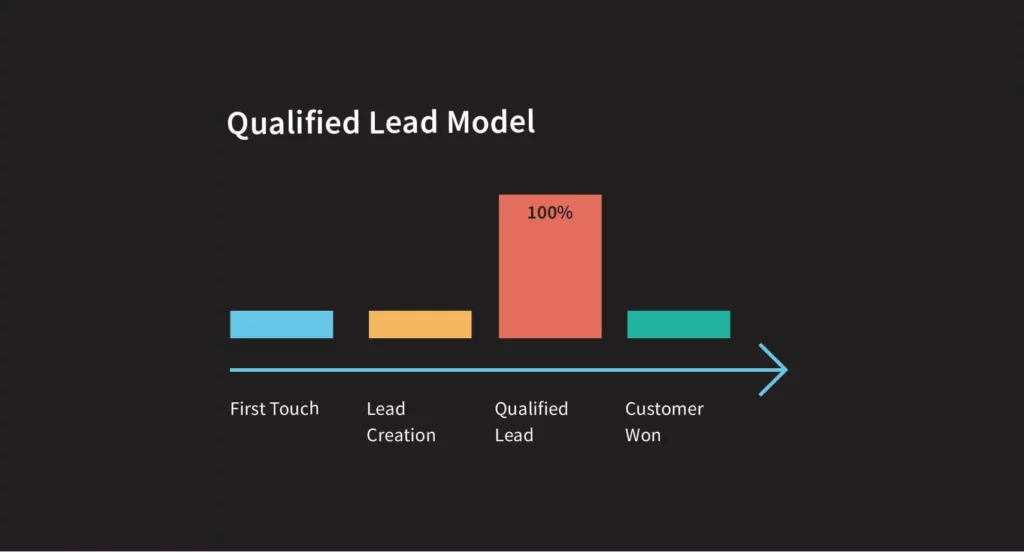
Conversely, last-touch attribution focuses solely on the final interaction preceding a conversion event. Despite its somewhat one-dimensional nature, last-touch attribution offers various benefits:
- Conversion Optimization: By concentrating on the last touchpoint, marketers can pinpoint the specific channels or campaigns directly contributing to conversions. This insight is invaluable for refining strategies and optimizing campaigns to drive higher conversion rates.
- Efficient Resource Allocation: Similar to first-touch attribution, understanding the last touchpoint aids in more effective resource allocation. By investing more in channels or campaigns impacting deal closures and revenue generation, marketers can maximize resource efficiency.
- Campaign Effectiveness: Last-touch attribution furnishes a clear depiction of the marketing effort directly influencing user actions. This understanding is crucial for assessing the success of specific campaigns and guiding data-driven decision-making.
Learn about marketing attribution softwares here.
Strategies for Layering First and Last Touch Attribution:
1. Analyzing User Exposure to Your Site
When delving into the realm of digital marketing attribution, understanding how users are exposed to your site is paramount. This analysis is often framed within the context of first-touch attribution, last-touch attribution, and the increasingly popular multi-touch attribution model.
Key Features:
- First-Touch Attribution: This method assigns credit to the first interaction a user has with your brand, whether it’s through a social media post, organic search result, or referral link. It provides insight into the channels that initially attract users to your site, offering valuable information for optimizing top-of-funnel marketing efforts.
- Last-Touch Attribution: Conversely, last-touch attribution attributes conversions solely to the last channel a user interacted with before converting. While it offers clarity on which channels drive final conversions, it may overlook the significance of earlier touchpoints in the customer journey.
- Multi-Touch Attribution: This approach combines elements of both first-touch and last-touch attribution, distributing credit across multiple touchpoints in the customer journey. By offering a holistic view of each channel’s role from initial exposure to final conversion, multi-touch attribution provides a more nuanced understanding of marketing effectiveness.
By analyzing user exposure through these attribution models, marketers can identify the most impactful touchpoints along the customer journey and optimize their marketing strategies accordingly.
2. Assessing Session Conversion Likelihood
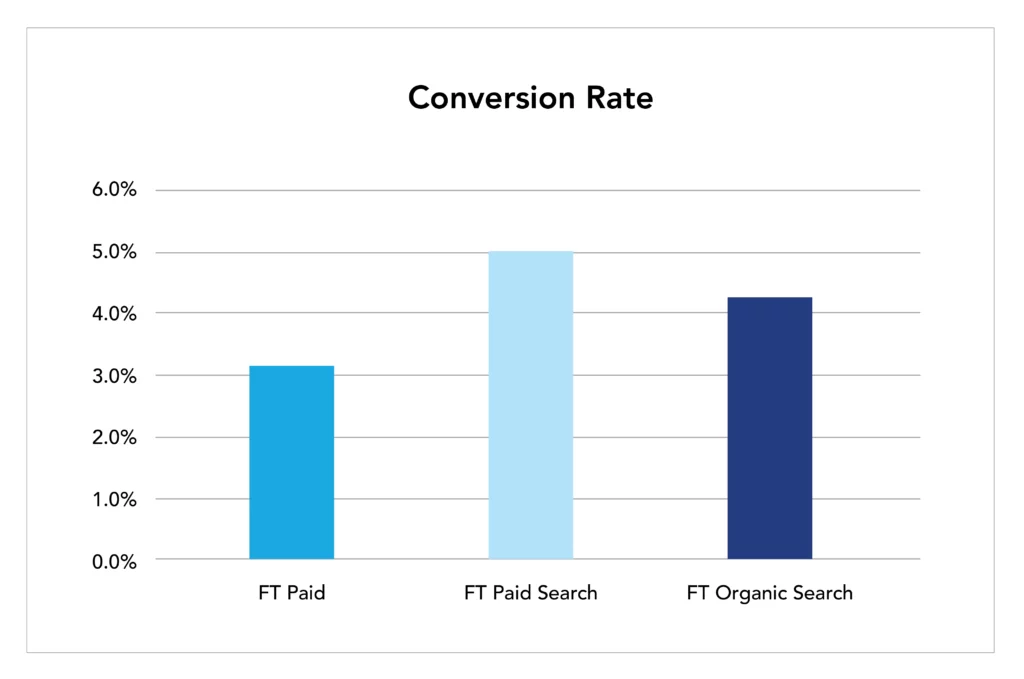
Another critical aspect of digital marketing attribution is evaluating the likelihood of a session converting into a desired outcome, such as a purchase or sign-up. This analysis often involves examining conversion rates attributed to different touchpoints in the customer journey.
Key Features:
- Last-Touch Conversion Rates: Traditionally, conversion rates are calculated based on the channel with which a user last interacted before converting. This metric tends to prioritize late-stage touchpoints, potentially overlooking the influence of early-stage marketing efforts.
- First-Touch Conversion Rates: By contrast, analyzing conversion rates associated with the first interaction a user has with your site provides insight into the effectiveness of early-stage marketing tactics and channels. It offers a more balanced perspective on conversion likelihood across the entire customer journey.
By considering both first-touch and last-touch conversion rates, marketers can gain a comprehensive understanding of how different touchpoints contribute to overall conversion success.
3. Determining the Influence of First Entry Points on Last-Touch Conversion Rates
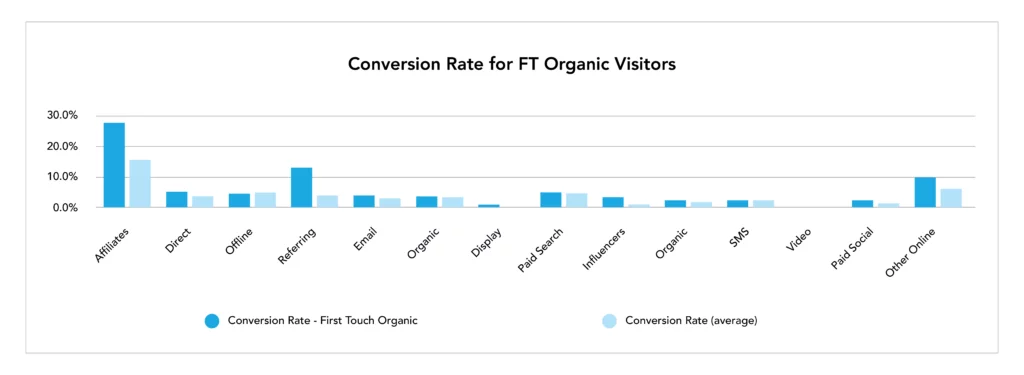
Understanding the impact of early-stage marketing efforts on last-touch conversion rates is crucial for optimizing marketing strategies and resource allocation. This analysis involves comparing typical channel conversion rates to instances where a specific entry point, such as organic search, serves as the user’s first interaction with your site.
Key Features:
- Comparative Analysis: By comparing channel conversion rates under normal circumstances to those where a specific entry point initiates the customer journey, marketers can assess the influence of early-stage tactics on final conversion rates.
- Insight Generation: This analysis generates insights into the effectiveness of different entry points in driving subsequent conversions. It highlights the importance of early-stage engagement in nurturing prospects through the sales funnel and maximizing overall conversion rates.
4. Determining the Impact of Your First Entry Point on Last-Touch Average Order Values
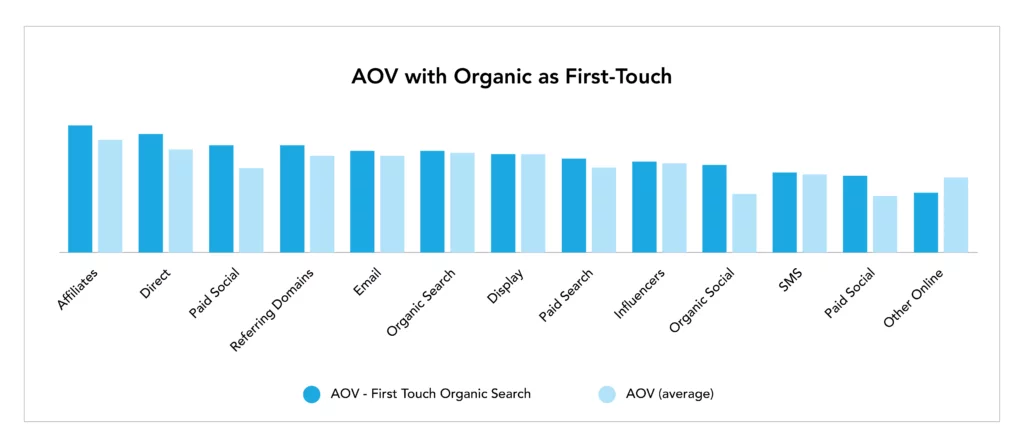
Analyzing the influence of a user’s first entry point on their subsequent order value provides valuable insights into the interconnectedness of touchpoints within the customer journey.
Key Features:
- Comparative Analysis: By examining how different entry points impact last-touch average order values, marketers can discern patterns and correlations between initial engagement and later purchasing behavior.
- Identifying Trends: This analysis reveals how specific entry points, such as organic search, influence the value of orders attributed to subsequent touchpoints. Understanding these trends allows marketers to optimize strategies for maximizing order values throughout the customer journey.
In our findings, we observed a notable increase in average order value across various last-touch channels when organic search served as the user’s first touchpoint.
5. Evaluating the Contribution of Early-Journey Marketing on Other Channel Revenue

Comparing revenue attribution between first-touch and last-touch interactions offers valuable insights into the interplay between different marketing channels.
Key Features:
- Revenue Attribution Analysis: By assessing how much revenue generated from a first-touch interaction is later attributed to other channels, marketers gain a deeper understanding of channel synergy and contribution to overall revenue generation.
- Guiding Conversion Journey: This analysis elucidates the role of each channel in guiding users through the conversion journey. Marketers can identify which channels play pivotal roles in nurturing prospects and driving conversions across various touchpoints.
In our example, we discovered that a significant portion of revenue generated from first-touch organic search interactions was later attributed to other channels, underscoring the importance of channel collaboration in driving revenue growth.
6. Measuring the Impact of Early-Journey Content (Blog)
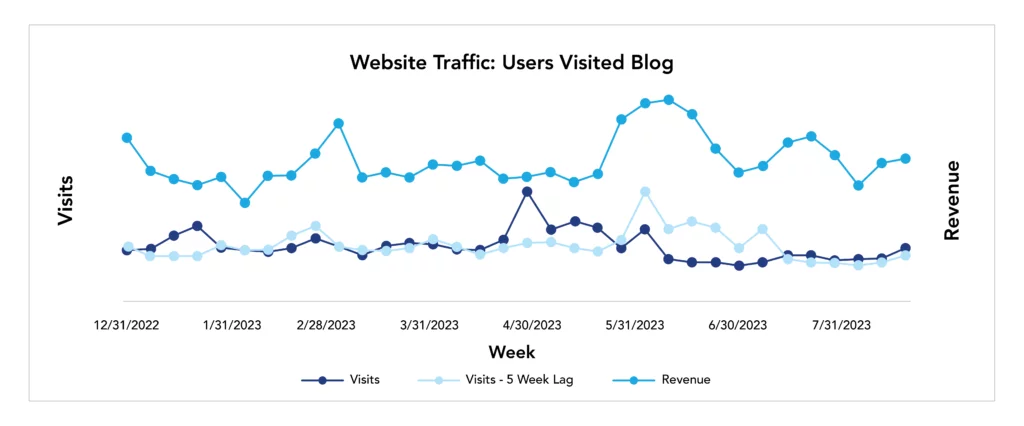
Assessing the impact of early-stage content, such as blog posts, on overall conversions provides insights into the long-term effectiveness of content marketing efforts.
Key Features:
- Beyond Last-Touch Analysis: Unlike traditional last-touch attribution, this analysis examines the cumulative impact of early-journey content on downstream conversions over an extended period.
- Identifying Trends: By tracking user behavior over time, marketers can identify trends, such as the propensity for blog visitors to return to the site within a specific timeframe to make purchases. Understanding these patterns enables marketers to refine content strategies and optimize conversion pathways.
Our analysis revealed that blog visitors not only converted at a higher rate but also exhibited higher engagement metrics, including page views per visit and lower bounce rates, highlighting the efficacy of blog content in driving meaningful user interactions.
Conclusion:
In the dynamic landscape of digital marketing, understanding the intricacies of customer interaction is crucial for success. First-touch and last-touch attribution models offer unique insights into different aspects of the customer journey, from awareness-building to conversion optimization.
By leveraging the insights provided by these attribution models and combining them with advanced analytics techniques, marketers can create more effective and targeted campaigns. Ultimately, this approach drives better results and maximizes return on investment by optimizing strategies across all touchpoints in the customer journey.



